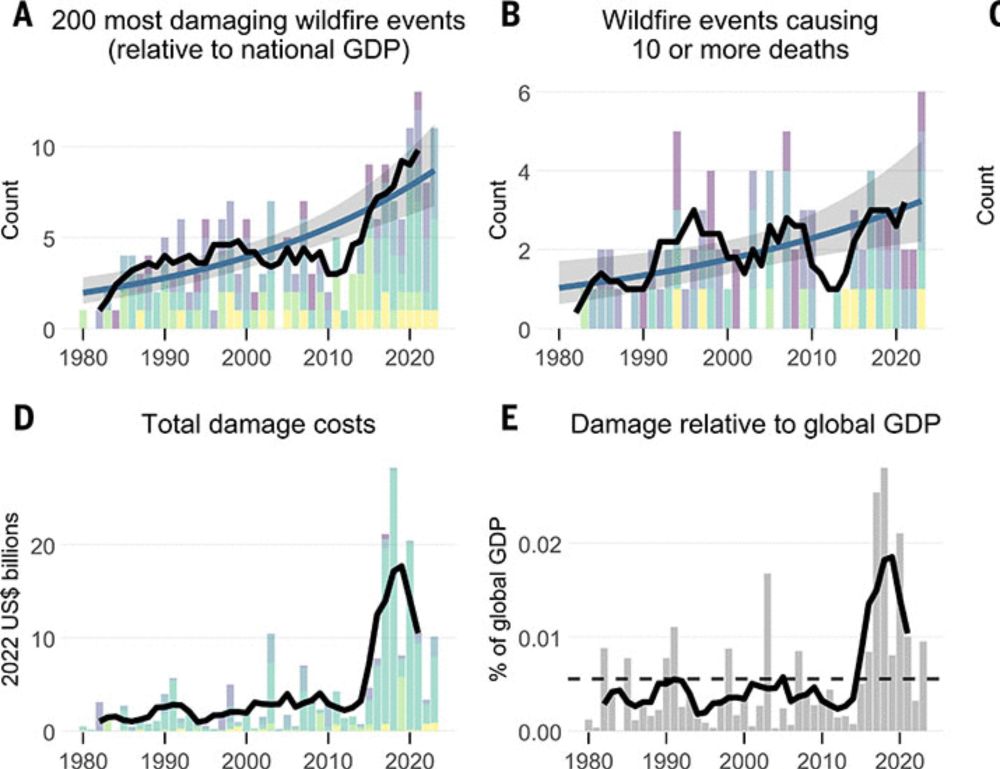
Associate Professor & Forest Fire Ecologist, University of Washington
Research in fire/disturbance/landscape/forest ecology in western US
2015 cohort in Smith Fellows Program
https://depts.washington.edu/bjhlab/
environment.uw.edu/news/2025/07...

Helpful and still very relevant context RE trends (and drivers of trends) in wildfires, especially given much of the broader dialogue around fires so far this summer across the n. hemisphere.
🔥🌲🌎
Reposted by Brian J. Harvey

www.science.org/doi/epdf/10....


gavinmjones.com/opportunities/

check out our talks from projects in the #HarveyLab on various aspects of fire ecology & management in forests of the Pacific Northwest + Western US, this Wed-Fri!
Looking forward to it!
@afe-fireecology.bsky.social
@uwenvironment.bsky.social
@uw-sefs.bsky.social
Reposted by Brian J. Enquist, Brian J. Harvey
bsapubs.onlinelibrary.wiley.com/doi/10.1002/...
🧪🌍🔥🌿🌳🔥🪴 @botsocamerica.bsky.social


Sequoia & Sequoiadendron: Two paleoendemic megatrees with different adaptive responses to high-severity fires
bsapubs.onlinelibrary.wiley.com/doi/10.1002/...
Plants are not adapted to fire, but to fire regimes
🧪🌍🔥🌳🌿🪴 #ecoevo #wildfire
📄Simulated postfire tree regeneration suggests reorganization of Greater Yellowstone forests during the 21st century
doi.org/10.1002/ecs2...

Reposted by Monica G. Turner, Brian J. Harvey

📄Simulated postfire tree regeneration suggests reorganization of Greater Yellowstone forests during the 21st century
doi.org/10.1002/ecs2...

@uwenvironment.bsky.social @uw-sefs.bsky.social #HarveyLab
Reposted by Brian J. Harvey


Reposted by Brian J. Harvey

Reposted by Brian J. Harvey

Reposted by Monica G. Turner, Brian J. Harvey, Christina Dollinger

Reposted by Brian J. Harvey

🧪🌍
Thanks to @mongabay.com journalist @john-cannon.bsky.social for the great reporting.
Reposted by Brian J. Harvey

Reposted by Joan Dudney


🌲🔥
Thanks to Anderegg Lab for hosting me, esp Joe Celebrezze. Was fun to be back at my UG alma mater.
@dudney-joan.bsky.social


Reposted by Brian J. Harvey

climate change has substantially increased the frequency and severity of such “disaster weather”"
dx.doi.org/10.1126/science.adr5127

Reposted by Katharine Hayhoe, Scott C. Doney, Brian J. Enquist , and 20 more Katharine Hayhoe, Scott C. Doney, Brian J. Enquist, Marco Festa‐Bianchet, Ben Bond‐Lamberty, Mike Flannigan, Robin J. Pakeman, Patrick A. Jansen, Neil Pederson, Brian J. Harvey, Jussi T. Eronen, Hisham Zerriffi, Tommaso Jucker, Sabina Burrascano, Carly D. Ziter, Darío Martin‐Benito, Susanne Lachmuth, Shan Kothari, Joan Dudney, Ellie M. Goud, Varina E. Crisfield, Katherine Sinacore, Rafael Candido‐Ribeiro


Reposted by Scott C. Doney, Ingolf Kühn, Elena Litchman , and 1 more Scott C. Doney, Ingolf Kühn, Elena Litchman, Brian J. Harvey
Join us @umontreal.ca as an Assistant Professor of Global Change Biology.
rh-carriere-dmz-eng.synchro.umontreal.ca/psc/rhprpr9_...


jobs.colostate.edu/postings/165...
Reposted by Brian J. Harvey

@uwnews.uw.edu #wawx #firefighting



Huge thx to @rupertseidl.bsky.social & his lab in Munich & Berchtesgaden NP for hosting, & to Janneke Hille Ris Lambers at ETH Zurich & Vaclav Treml at Charles U.


We have great people here in a fantastic location that is probably a lot cooler (temperature-wise) than wherever you live during summer!
www.employment.mtu.edu/en-us/job/49...
Reposted by Ben Bond‐Lamberty, Brian J. Harvey, Carly D. Ziter
PhD: www.lss.ls.tum.de/fileadmin/w0...
PostDoc: www.lss.ls.tum.de/fileadmin/w0...



